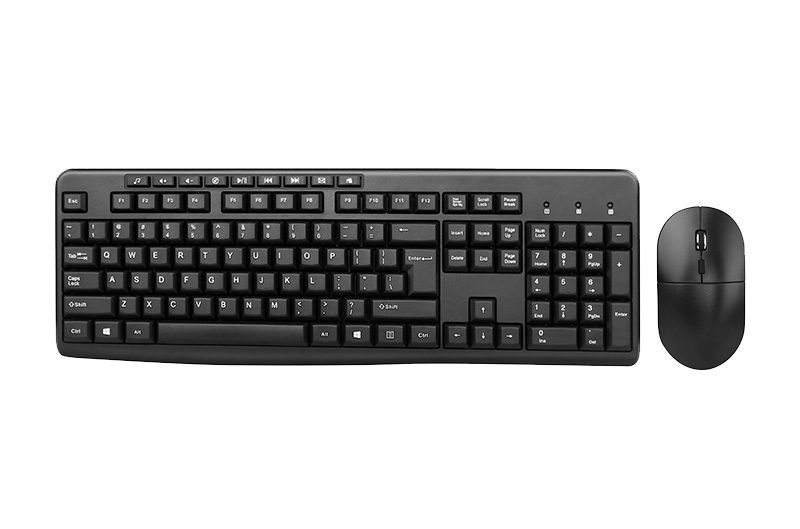Optical Mouse The Pinnacle of Precision and Efficiency
Release time:
2023-12-01
In the world of computing, every detail counts. From the processor speed to the storage capacity, every component plays a crucial role in determining the overall performance of a computer system. However, one often overlooked aspect that can significantly impact user experience is the type of mouse used. Enter the optical mouse – a device that has revolutionized the way we interact with our computers.

The optical mouse, as the name suggests, uses an optical sensor to track movement instead of relying on mechanical components like ball bearings or rollers. This technology allows for greater precision and accuracy, making it an essential tool for graphic designers, photographers, and anyone who requires pinpoint control.
One of the key advantages of an optical mouse is its durability. Because it lacks moving parts, there is less chance of wear and tear, resulting in a longer lifespan than traditional mice. Additionally, optical mice are more resistant to dust and debris, which can cause issues for mechanical mice over time.
Another significant benefit of optical mice is their ability to work on virtually any surface. Traditional mice require a smooth, hard surface to operate effectively, limiting their usability in certain environments. In contrast, optical mice can be used on a variety of surfaces, including glass, plastic, and even some fabrics. This makes them ideal for use in both office and home settings, as well as on the go.
Optical mice are also highly customizable, with many models offering adjustable sensitivity and button configurations. This allows users to tailor their mouse to their specific needs and preferences, further enhancing their overall computing experience.
In terms of design, optical mice have come a long way since their inception. Gone are the days of clunky, boxy designs; today's optical mice are sleek, compact, and stylish. Many models feature ergonomic contours for added comfort during extended use, while others boast LED lighting for a futuristic touch.
Despite their many benefits, optical mice are not without their drawbacks. One potential issue is that they may not perform as well on extremely low-light surfaces, such as those found in dimly lit rooms or at night. However, this is becoming less of a concern as manufacturers continue to improve the technology behind optical mice.
In conclusion, the optical mouse has truly revolutionized the way we interact with our computers. With their unparalleled precision, durability, and versatility, it's no wonder that they have become the preferred choice for millions of users worldwide. As technology continues to advance, it will be exciting to see what new innovations the future holds for this essential computing tool.
1. Introduction to Silicon Carbide Tubes
Silicon carbide tubes have emerged as a groundbreaking material for the electronics industry, offering exceptional properties that surpass traditional materials. These tubes are comprised of silicon carbide, a compound composed of silicon and carbon atoms. With a unique crystal structure, silicon carbide exhibits remarkable strength, high thermal conductivity, and excellent resistance to chemical reactions.
2. The Exceptional Material Properties of Silicon Carbide
Silicon carbide boasts an impressive array of material properties that make it highly sought-after for electronic applications. Firstly, its outstanding hardness and strength make it ideal for withstanding extreme conditions, including high temperatures and harsh environments. Additionally, silicon carbide exhibits excellent thermal conductivity, ensuring efficient heat dissipation and reducing the risk of overheating in electronic devices.
Furthermore, this material demonstrates remarkable resistance to chemical reactions, corrosion, and oxidation, enabling prolonged component lifespan and enhanced reliability. Its wide bandgap makes it an excellent choice for high-power and high-frequency applications, allowing for efficient energy conversion and reduced power losses.
3. Applications of Silicon Carbide Tubes in Electronics
The versatility of silicon carbide tubes extends to various electronics applications, revolutionizing the performance and possibilities of advanced electronic components. One prominent application is in power electronics, where silicon carbide tubes are utilized in power devices such as diodes, transistors, and thyristors. These components enable higher voltages, faster switching speeds, and reduced power losses, leading to more efficient and compact power electronic systems.
Moreover, silicon carbide tubes find their place in high-temperature environments, such as aerospace and automotive industries, where conventional materials struggle to withstand extreme conditions. The exceptional thermal and mechanical properties of silicon carbide tubes make them ideal for use in sensors, heating elements, and electronic components exposed to elevated temperatures.
4. Enhancing Efficiency and Performance with Silicon Carbide Tubes
The utilization of silicon carbide tubes in electronic components offers significant advantages in terms of improving efficiency and overall performance. Due to their high thermal conductivity, these tubes facilitate efficient heat dissipation, preventing the accumulation of heat and ensuring optimal operation even under intense thermal loads. This characteristic is particularly valuable in power electronics, where efficient heat management is crucial for preventing thermal runaway and maintaining stable performance.
Furthermore, silicon carbide tubes enable higher operating temperatures, allowing for the design of more compact and lightweight electronic systems. By withstanding extreme conditions, these tubes eliminate the need for additional cooling mechanisms, reducing system complexity and energy consumption. The enhanced thermal management and improved efficiency provided by silicon carbide tubes contribute to more reliable and durable electronic devices.
5. Silicon Carbide Tubes: A Sustainable Solution for the Future
In addition to their outstanding material properties and versatile applications, silicon carbide tubes offer a sustainable solution for the future. As the world strives for greener and more energy-efficient technologies, silicon carbide emerges as an eco-friendly alternative to traditional materials. Its durability and resistance to chemical reactions result in longer component lifespans, reducing electronic waste and promoting sustainability.
Furthermore, the remarkable efficiency of silicon carbide-based electronic systems helps conserve energy and minimize power losses, contributing to a more sustainable and environmentally conscious future. With its potential to revolutionize numerous industries, silicon carbide tubes play a vital role in advancing technology while mitigating the environmental impact.
6. Frequently Asked Questions (FAQs)
1. What are the main advantages of using silicon carbide tubes in electronic components?
The main advantages of silicon carbide tubes in electronic components include exceptional hardness, high thermal conductivity, resistance to chemical reactions, reduced power losses, and the ability to withstand extreme temperatures and harsh environments.
2. Are silicon carbide tubes more expensive than traditional materials?
While silicon carbide tubes may initially have a higher cost compared to traditional materials, their exceptional performance, extended lifespan, and improved efficiency make them a cost-effective choice in the long run.
3. Can silicon carbide tubes withstand extreme temperatures?
Yes, silicon carbide tubes exhibit excellent thermal stability and can withstand extreme temperatures, making them suitable for high-temperature applications in industries such as aerospace and automotive.
4. How does the versatility of silicon carbide tubes contribute to technological advancements?
The versatility of silicon carbide tubes allows for their use in various electronic components, including power devices, sensors, and heating elements. This versatility contributes to technological advancements by enabling higher performance, compact designs, and enhanced efficiency in electronic systems.
5. Are there any limitations or challenges associated with silicon carbide tubes?
While silicon carbide tubes offer numerous advantages, there are challenges in terms of manufacturing complexities and cost. Additionally, the integration of silicon carbide technology into existing infrastructure may require adaptation and further research.
The remarkable properties of silicon carbide tubes have unlocked a world of possibilities in the field of advanced electronic components. From power electronics to high-temperature applications, these tubes offer exceptional strength, thermal conductivity, and resistance to chemical reactions. With their ability to enhance efficiency, reduce power losses, and withstand extreme conditions, silicon carbide tubes are poised to revolutionize various industries. Embracing this versatile and sustainable material opens doors to groundbreaking advancements in technology and paves the way for a brighter future.
RELATED NEWS

 get a quote
get a quote












